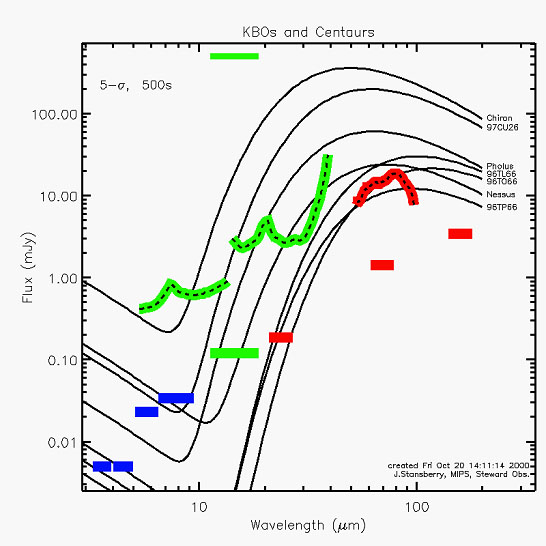 |
New members of the Kuiper Belt are discovered almost every day. They are
the red objects in the view of the solar system to the left. The outermost circle is the
orbit of Neptune. The tendency for the Kuiper Belt Objects to lie along radial lines is an
artifact of the way searches for them are carried out - they actually form a far-flung
system extending far beyond the traditional outer bound of the solar system.We have been
limited in studies of Kuiper Belt Objects to observation of reflected light. Therefore, we
cannot tell for sure whether the objects are large and dark or small and light. By
detecting their thermal emission, we can make the distinction. Large dark objects will
absorb more sunlight and heat up more, producing brighter infrared fluxes both because of
their larger sizes and higher temperatures. Small light objects will reflect most of the
energy from the sun and will have faint infrared fluxes because of their small sizes and
low temperatures. (from Minor Planet Center) |
![]()




